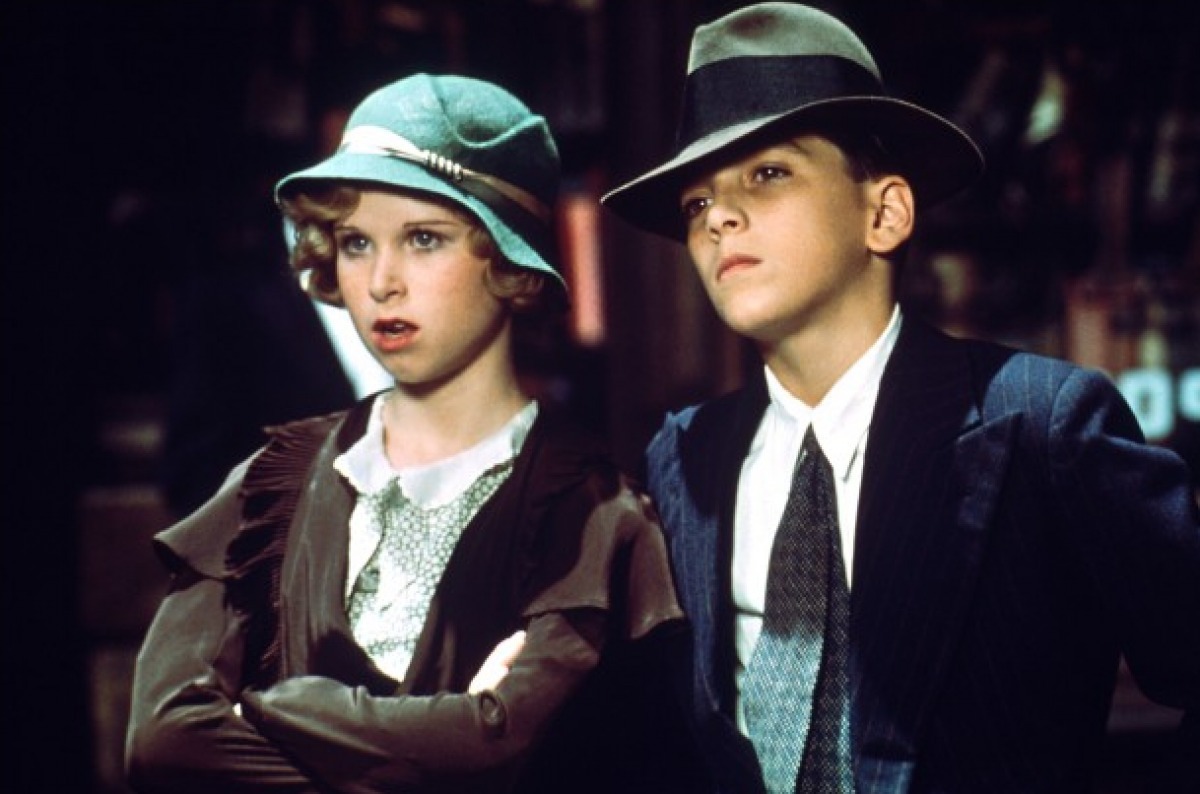By Emilia Brookfield-Pertusini
Shimmering silver costumes. Specials on da rocks. Spiteful dancehall girls waiting for their big break. Welcome to the world of Bugsy Malone. Slightly feverish, suffering the consequences from getting too ‘tight’ the night before, I decided to revisit my childhood favourite. My mother protests, “not everyone has had as camp an upbringing as you”, but I really think every child, and film-loving adult, should be made to watch this film. How does a film that merges The Sopranos with Cabaret, is set in New York but was filmed in Slough, relies entirely on a cast of under 15s, and has iconic songs that the children certainly didn’t record themselves, last beyond the bizarreness of 70’s British TV? Charm.
There’s a cold, deserted New York street where moonlight and outsiders dare to tread. The sound of frantic footsteps dart behind a brown stone, disturbing the alley-cats and a mother at her wit’s end. Shouting. The arrival of the gang in this dead-end spot signals the struggle. Roxy the Weasel, covered in deadly custard, lies in the gutter. Cut to song.
Gang warfare, the Mob, showgirls who sing suggestively to an audience of mobsters, politicians, and wise guys, shoot-outs and lock-ins. Most children’s films would try and distance themselves away from this crime-ridden world, even if it’s romantically portrayed in 1920’s glamour and gowns. Part of Bugsy’s magic is that it’s a film for children, starring children, yet why treat children like kids, give them a film that grows up with them. Children aren’t as afraid of playing in a grown-up space as we often believe, Bugsy accepts this and cuts out the middleman by making the kids the heroes without diluting their characters or stories. ‘Namby-pamby showgirls’ are criticised by tedious casting directors, all 13 still, who effortlessly deliver lines exclaiming how they could ‘do something’ with that ‘great face’. From Fat Sam’s Tony Soprano reminiscent demeanour, to passing waitresses and agents, all the characters are given their time to play pretend at full, convincing pelt. The moustaches drawn on with pencils, eyes gaze up as Tallulah glides across the stage ready to start her number, she rolls her eyes in tired professionalism, winking at mobsters and factory workers alike. She opens her mouth ready to sing. ‘My name is Tallulah, I live ‘til I die’. Whilst it may sound like a perfect copy of a showtune, it sounds like a copy written by the kids based off snippets of songs heard through their parents’ records with their innocence of songwriting shining through. This is a musical that wants to feel like a child’s game, and it’s terrific.
A world powered by peddle-powered cars that are constantly running from the creek of peddle chains belonging to rival mobs, where characters retire from a stressful day with a cocktail and a cabaret, guns that actually shoot; it’s all rather charming. Age appropriateness without patronising. The gusto to the commitment of Bugsy being a mob film is fabulous without pretension; language, names and settings are all so perfectly in keeping with the genre, why sacrifice any of the more cert 15 bits? Despite this age-blind approach, the film gives no sour stage-school taste. Jazz hands are firmly excluded from this speakeasy. Jodie Foster, who plays the wickedly witty chanteuse Tallulah, arrived at the Bugsy set fresh from the scenes of Taxi Driver; these are children who are already immersed into the adult world of acting, why not let them play-pretend as adults, but without the bullets?
Bugsy finishes galivanting through 1929’s Little Italy with a Leone style shootout. Fat Sam’s Grand Slam is covered in cream, the volume of which almost ventures into the absurd. The glittering girls are dulled. The piano keys glue together under the warfare. Tallulah lets out her last quip, ‘so this is show business’, as she wipes the custard from her eyes. In the normal world, this is catastrophic, a merciless shooting of an entire speakeasy. Yet in Bugsy’s world, it is the perfect finale to extended game of dress up. The previously deadly custard bullets loose all killing potential, causing all to erupt into a custard coated final number. The costumes must all go back into the box, the kids must go back to their respective houses for tea, and they turn back into kids once more – just kids, having fun. Whilst they are convincing and almost scarily good at dressing up as adults, Bugsy Malone has managed to escape a fate of being caged into the weird children’s media of the 1970s by keeping a surreal sense of fun and games close to its chest. They ‘could’a been anythin’ they wanted to be’ and they chose to be fun.



